Contact
Jsme tu pro vás osobně od pondělí do pátku od 8:00 do 17:00 hodin. Pomocí tohoto odkazu najdete kontaktní osobu pro Váš region.
Centrála Wolfurt
+43 5574 6706-0
Nákupní košík | 0 Artikl Změnit nákupní košík
Poznámka
| Obrázek | Artikl | ks | Jednotková cena | Celková cena | |
|---|---|---|---|---|---|
| Nejsou dostupné žádné záznamy | |||||
Seznam - Média & Downloads
-
Zákazníci
-
Stavba forem
-
Stavba lisovacích nástrojů
-
Strojírenství a konstrukce přípravků
-
Konstrukteri
- Vstřikovny
-
-
Produkty
-
Společnost
-
Kariéra
-
Servis
O-ring seals - in perfect shape, part 1
Zveřejněno dne: 30.06.2020
General information and selection
In this first part, we explain the different sealing types, installation options and materials of O-rings especially for mould making.
O-ring seals are C-parts which cost only a few cents apiece. However, if an O-ring seal does not seal properly, it may result in downtimes and lead to high costs. To prevent this, in addition to the selection of the correct material, the design, the production of the O-ring groove and the correct installation, removal and maintenance of the O-ring seals are all important factors.

Use of O-ring seals
O-ring seals are mainly used in mould making to seal cooling holes used at plate transition or for components such as fountains and deflection elements. But O-ring seals can also be found in other components such as hydraulic cylinders and oil ports.
Dynamic and static sealing
A basic distinction is made between dynamic and static sealing. A dynamic seal is when the seal is created between components that move towards each other. O-ring seals are the optimum technical solution for dynamic sealing only in exceptional cases. For static sealing there is no movement between the components.
Axial and radial installation
The following figures compare axial and radial installation
Axial installation

Radial installation

In mould making, mainly static sealing is used with mostly axial installation. An example of this is the transition of the cooling holes from the cavity plate to the inserts.
Example of a mould insert

O-ring seal materials in mould making
The O-ring seals used in mould making are made of the material fluororubber - shortened to FKM, or FKM plus. FKM is generally very resistant to a variety of mediums and chemicals.
The selection of O-ring seal material depends mainly on the operating temperature. The usual FKM materials are used at water temperatures up to 100°C. If these were operated at water temperatures above 100°C they would harden, lose their elasticity and thus the pretension for the sealing effect. That’s why the special high-temperature O-ring seals made of the material FKM plus were developed for water temperatures over 100°C.
Firma
Meusburger Georg GmbH & Co KG
Kesselstr. 42
6960 Wolfurt | Austria
+43 5574 6706
office@meusburger.com
@ 2024 Meusburger
 © 2024 by Meusburger Georg GmbH & Co KG | All rights reserved
© 2024 by Meusburger Georg GmbH & Co KG | All rights reserved





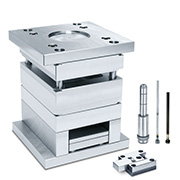
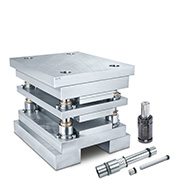
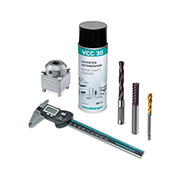
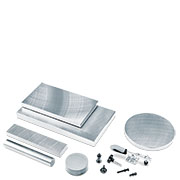

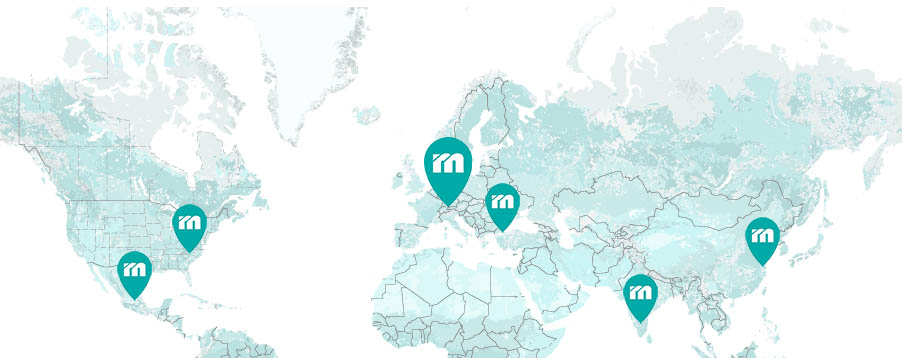
 Česká republika [CS]
Česká republika [CS]
 Danmark [DA]
Danmark [DA]
 Deutschland [DE]
Deutschland [DE]
 España [ES]
España [ES]
 France [FR]
France [FR]
 India [EN]
India [EN]
 Italia [IT]
Italia [IT]
 Magyarország [HU]
Magyarország [HU]
 México [ES]
México [ES]
 Nederland [NL]
Nederland [NL]
 Österreich [DE]
Österreich [DE]
 Polska [PL]
Polska [PL]
 Portugal [PT]
Portugal [PT]
 România [RO]
România [RO]
 Schweiz [DE]
Schweiz [DE]
 Slovenija [SL]
Slovenija [SL]
 Srbija [SR]
Srbija [SR]
 Suomi [FI]
Suomi [FI]
 Sverige [SV]
Sverige [SV]
 Türkiye [TR]
Türkiye [TR]
 United Kingdom [EN]
United Kingdom [EN]
 USA [EN]
USA [EN]
 Ελλάδα [EL]
Ελλάδα [EL]
 България [BG]
България [BG]
 Росси́я [RU]
Росси́я [RU]
 华 [ZH]
华 [ZH]